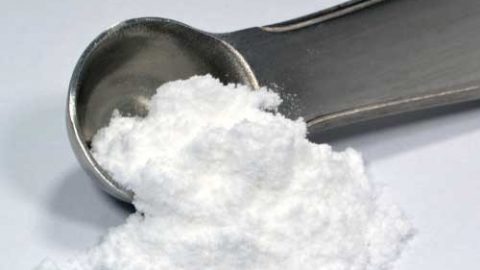Note: see the 2021 update to this article HERE.
Frequent consumption of red meant and processed meats has been shown in population studies to be associated with cardiovascular disease, cancer and type 2 diabetes [1-3]. It has also been suggested that eating meat increases all-cause mortality [4]. Hence, a high meat intake (regardless of its fat quantity and quality) is generally perceived to be unhealthy and something that should be avoided.
However, although there are many studies documenting these associations, results are not always consistent and there are many important methodological issues which weaken the conclusions (more on that in a bit). In the same way as the putative health risks of red meat consumption is investigated, its documented health benefits (which I will cover below) are equally as important and must be given a fair chance in the establishment of dietary recommendations related to red meat consumption.
In this article I will therefore cover both the risks and benefits associated with red meat consumption, and after having taken all the available scientific data into consideration, present a more balanced conclusion about the “meat is bad” dogma…
The “bad” side of meat – supposed harm to health
Cardiovascular disease (heart attack, stroke and coronary heart disease)
In a study that found a significant association between increased servings of red meat and increased risk of coronary heart disease, this effect became non-significant (meaning it could have occurred by chance) after controlling for age, body weight, smoking, alcohol, physical activity, energy intake and family history of coronary heart disease in the multivariate analysis [1]. Another study reported found that red meat intake was associated with an increased risk of mortality from coronary heart disease, but their definition of red meat included processed meats [5]. Similar inconsistencies have been observed in other studies [1, 6], because there is no universal agreement of which meats should be classed as processed or not [7, 8]. A recent meta-analysis from Harvard Medical School concluded that unprocessed red meat intake is not associated with coronary heart disease, while processed meat intake is associated with 42% higher risk of coronary heart disease [9]. This study also found that consumption of unprocessed or processed meat were not associated with stroke [9].

Much of the research on meat and health is based on studies that have investigated dietary patterns rather than meat consumption in relation to risk of cardiovascular disease [2, 10-13]. However, when looking at dietary pattern analyses and comparisons one has to remember that these types of studies make it impossible to isolate the effects of red meat alone, which is what the red meat – health diatribe is all about. Red meat can be part of either a healthy diet based on vegetables / fruits and unprocessed whole foods, or an unhealthy processed diet lacking in vegetables / fruits.
A typical Western dietary pattern has been identified that is high in red meat and meat products, low in fruit and vegetables and coupled with a sedentary lifestyle, smoking and high alcohol intake [14]. This type of diet has been associated with a 22% greater risk of mortality from cardiovascular disease than a prudent dietary pattern that is high in fruit and vegetables, legumes, poultry and whole grains [15]. Bearing in mind the well documented health promoting effects of fruit and vegetables [16] and the health destructive consequences of a sedentary lifestyle, smoking and excessive alcohol consumption, this doesn’t come as a surprise. And it cannot blame the meat for it. Including red meat as part of the typical Western dietary pattern erroneously implies that red meat cannot be part of a healthy dietary pattern characterized by a high intake of fruit and vegetables, oily fish and legumes. This has been proven in less frequently cited studies, which clearly demonstrated that when red meat is included is such a healthy dietary pattern, it is not associated with cardiovascular disease mortality [17, 18].
Cancer
Based on epidemiological studies it is assumed that meat increases risk for cancer, particularly of the colon, breast and prostate [19]. One of the 10 universal guidelines for healthy nutrition – in a report of the World Cancer Research Fund released at the end of 2007 – is to “limit intake of red meat and avoid processed meat”, as a result of the “convincing evidence” for an association with an increased risk of colorectal cancer development [20]. However, as it turns out, the allegedly “convincing evidence” is not at all that convincing [21]. For those unfamiliar with scientific parlance, saying that something has “convincing evidence” is a very bold statement. According to the scientific norms, that kind of statement requires that all different types of studies come to the same conclusion, and that there are no methodological flaws in the studies. This, coupled with the fact that the World Cancer Research Fund presented its “convincing evidence” in only one page of text of the 517-page report, has made several leading cancer researchers raise their eye-brows [21, 22].

The flaws with World Cancer Research Fund report are obvious when one looks at statistics for meat intake and colon cancer incidence. According to this report, if we decrease our meat intake, then our risk of colorectal cancer will decrease too… In the UK during the period 1963 to 1998 the intake of red meat decreased by 25% [23]. To the contrary, the incidence of colorectal cancer increased substantially! [23] Similarly, in Norway the intake of red meat has remained steady or has even decreased at a time when their risk of colorectal cancer increased by 50% [23]. The lack of association between meat intake and colorectal cancer risk can be illustrated further by comparing the countries in the European Union. Meat consumption in the UK is less than that in any of the other EU countries [24] and yet the colorectal cancer incidence is much higher [23]. Spain has a very much higher intake of red meat but still the third lowest colorectal cancer risk [23].

One main flaw (there are several!) with the epidemiological studies which have investigated the relation between meat intake and cancer is that they haven’t separated the effects of processed and unprocessed meat, and also not taken into consideration cooking methods [25]. The most supported mechanism behind the putative carcinogenic effect of meat is the formation of potentially carcinogenic compounds – HCAs (heterocyclic aromatic amines) and PAHs (polycyclic aromatic hydrocarbons) – when meat is cooked at high temperatures and well-done [26, 27]. However, very few studies have assessed the method of cooking when measuring meat consumption. Therefore, in the largest studies, the effects of red meat per se have not been isolated from the effects of processing or cooking temperatures. Of the few studies which have considered these factors, some found an increased risk of colon cancer with high intakes of well or very well done red meat compared to low intakes [28], whilst others found no increase in risk [29, 30]. It is notable that rare/medium done red meat and baked red meat has been associated with a reduced risk of colon cancer [28]. Unfortunately, this doesn’t make it to the headlines.
The diverging findings can be explained by the fact that approximately 80% of colon cancer cases are thought to be caused by modifiable diet and lifestyle factors [31] and red meat (whether processed or not) is only one factor among a myriad of other strongly influential factors, including intakes of fruit and vegetables, physical activity level, obesity and smoking etc.
A notable study is further supporting this [32]; here 265 000 Japanese persons were followed for 25 years. A detailed diet history was taken at recruitment and regularly updated. Vegetable intake was stratified into four intake groups (daily, often, sometimes, and never) and then analyzed in relation to meat consumption and cancer risk in each group. As expected, the daily vegetable intake group had markedly lower cancer rates than the never vegetable eating group, with the two middle groups being intermediate. Interestingly, in the group who ate green-yellow vegetables daily, there was an inverse association between meat intake and colorectal cancer, meaning that a higher meat intake in the context a vegetable rich dietary pattern actually is associated with a lower colorectal cancer incidence! In the group who never ate vegetables there was, as expected, a positive association between meat intake and cancer of the colon and rectum (meaning the higher the meat intake, the higher the cancer incidence). Thus is seems that meat is a risk factor only among those who do not eat sufficient amounts of protective factors, like vegetables / fruits. In live with this, it has been shown that high consumption of fruit and vegetables is associated with a reduced risk of colon cancer [33].
Type-2 diabetes
Intake of red meat has also been associated with type 2 diabetes [34]. A meta-analysis that pooled the results from 12 population studies, found that when comparing high vs. low intake, the risk for type 2 diabetes was increased by 21% for unprocessed red meat and 41 % for processed red meat [34]. However, the absolute amount eaten varied greatly, and because the included studies didn’t properly control for influencing variables like body weight and physical activity, the researchers themselves admitted that it is possible that these confounding factors could have explained the observed association, and not necessarily the meat intake [34]. This is underscored by another study which found that the effect of unprocessed meat intake on type 2 diabetes is modified by body weight [35], which in turn is a function of physical activity and caloric intake.
In contrast, a more recent and more detailed meta-analysis from Harvard Medical School, which pooled the results from 20 population studies, concluded that red meat intake is not associated with type 2 diabetes [9]. However, in agreement with the previous meta-analysis, an association between processed meat intake and type 2 diabetes was found (19% increase in risk per 50 g serving/day) [9].
All-cause mortality
In March 2012, a study was published that created media headlines.[4] It investigated the association between red meat intake and mortality. This large study prospectively followed 37 698 men from the Health Professionals Follow-up Study (1986-2008) and 83 644 women from the Nurses’ Health Study (1980-2008) who were free of cardiovascular disease (CVD) and cancer at baseline. Diet was assessed by validated food frequency questionnaires and updated every 4 years. The results showed that, after having adjusted for major lifestyle and dietary risk factors, adding 1 serving (3 oz) of unprocessed red meat or processed red meat per day to one’s regular diet was associated with a 13% and 20% greater chance of dying from all causes, respectively.
It was also estimated that substitutions of 1 serving per day of other foods (including fish, poultry, nuts, legumes, low-fat dairy, and whole grains) for 1 serving per day of red meat were associated with a 7% to 19% lower mortality risk. It was further estimated that 9.3% of deaths in men and 7.6% in women in this study could have been prevented at the end of follow-up if all the individuals consumed fewer than 0.5 servings per day (approximately 42 g/d) of red meat. The conclusion of this study stated that red meat consumption is associated with an increased risk of total, CVD, and cancer mortality, and that substitution of other healthy protein sources for red meat is associated with a lower mortality risk [4].

My first question about this study was how it assessed lifestyle related risk factors. What jumped at me right off the bat when I was reading through the research publication was that the researchers, while using validated food frequency questionnaires, did not use validated lifestyle and physical activity assessment questionnaires. Questionnaires are infamous for being inaccurate and bias prone. So if a questionnaire is used, it better be validated (which means that what it is supposed to be measured reasonably correlates to the results obtained with a more exact labor intensive measurement tool). This, coupled with the finding that associations between diet and mortality are confounded by fitness [36], greatly weakens the conclusions drawn in this study.
To put the red meat – mortality data in context, and to illustrate the importance of fitness, I want to cite a study which investigated the association of cardiovascular fitness (measured by total duration during a maximal treadmill exercise test, and not a nonsense questionnaire!) and mortality [37]. Compared with the least fit men and women, the most fit men and women had 43% and 53% lower risk for all-cause mortality, and 47% and 70% lower risk of cardiovascular disease mortality, respectively [38]! Put this next to the meat – mortality data stating a 13-20% increase in mortality risk by eating red meat, and you get the point; red meat only plays a tiny, if any, role in the overall life style – mortality relation. It’s pretty obvious that the problem is not the red meat, but our lazy asses!!!
The importance of distinguishing between unprocessed and processed red meat
The most robust and reliable evidence to date of how unprocessed vs. processed red meat consumption may influence risk of cardio-metabolic diseases comes from the Harvard Medical School meta-analysis mentioned above. The findings of different association of unprocessed vs. processed red meat (bacon, hot dogs, salami etc.) with coronary heart disease and type 2 diabetes (no effect of unprocessed red meat but increased risk with processed red meat) underscores the need to better characterize which particular components of meats that may increase cardio-metabolic risk [9]. The Harvard researchers also criticized the World Cancer Research Fund – American Institute for Cancer Research statement that both red and processed meat consumption increases colorectal cancer, because they didn’t distinguish between processed and unprocessed red meat [9].
At least in the United States, where most of the studies have been performed, processed meats contain on average similar amounts of saturated fat and lower amounts of cholesterol and heme iron than do unprocessed meats, suggesting that differences in these constituents do not account for different associations with disease risk [9]. This is a very important fact because both saturated fat, cholesterol and heme iron have been condemned for being the “red meat evils”. From this data, we can draw the following conclusions:
1) Unprocessed red meat per see is NOT harmful.
2) Processed red meat may increase the risk for heart disease and type 2 diabetes, but this is not due to its content of saturated fat, cholesterol or heme iron.
Thus, it is other constituents in processed red meat that are contributing to the observed health risk associations. Processed meats contain preservatives and additives that can increase the risk of cardiovascular disease, type 2 diabetes or cancer. These may include heterocyclic amines and nitrosamines formed during cooking, which can be toxic to pancreatic cells [39]. In addition, advanced glycation end products formed in meat and high fat products during heating and processing have been associated with insulin resistance and diabetes complications [40].
In addition, the types of foods that are displaced when people consume unprocessed or processed meats could also account for their different associations with risk [9]. Most folks would probably not eat a hot dog or bacon with veggies…
I want to bring up another point showing that red meat has been unfairly attacked. While meat is blamed for generating risky heterocyclic amines during high temperature cooking (for example over open flames), nobody talks about the high levels of acrylamide that are formed during frying, roasting, or baking of carbohydrate rich foods, especially potatoes and cereal products [41, 42]. And acrylamide possesses a range of hazardous effects and is known to induce carcinogenicity, genotoxicity, neurotoxicity and reproductive toxicity [41].
Let’s take a look at the average daily intakes for heterocyclic amines (from red meat) and acrylamide (from potatoes and cereals):
Average daily intakes for heterocyclic amines is in the range 2.5 – 26 ng/kg body weight/day [43-45].
Average daily intakes for acrylamide is in the range 370-490 ng/kg body weight/day [46, 47]
This clearly shows that acrylamide intakes are 20 to 150 times higher than that of heterocyclic amines! One can wonder if the potato and celery industry is lobbying the federal government body that is issuing dietary guidelines and public health recommendations that urge us to lower our red meat intake…
Red meat and fat intake
Many people avoid red meat because it contains lots of fat (especially saturated fat) and cholesterol. In an upcoming article I critically examine and explain the flaws in the diet-heart hypothesis (i.e, the presumed link between saturated fat intake and cardiovascular disease) that has led to the .long-standing public health recommendations for limiting saturated fat intake as a means to prevent cardiovascular disease. I also cover the purported association between fat intake and obesity
In an upcoming article. As illustrated by a growing number of studies showing that low-carb / high-fat diets are better for fat loss and weight control, as well as in improving metabolic risk factors [48-51], one can conclude that eating fat does not automatically increase body fat. For those of you who still have dietary fat phobia, here are the hard facts as it relates to meat.
The fat content and fatty acid profile in red meat is often misunderstood. The first thing to note is that most of the fat can easily be trimmed off before cooking. There is confusion among consumers about the health impact of lean meat and meat fat, because it is commonly – but incorrectly – thought that lean meat has the same saturated fat content as the visible fat of meat. Once visible fat is trimmed, lean red meat often contains less than 5-10% fat [52]. And in high quality lean red meats there is very little fat marbling within the meat. Lean meat is relatively higher in polyunsaturated fat and lower in saturated fat compared with the visible fat of meat (that can be trimmed off) [52]. The saturated fat content of lean red meat is less than 2-3g/100g (3.5 oz) lean red meat compared with more than 37g/100g (3.5 oz) of “trimmable fat” from red meat.
The main fat in lean meat tissue is in phospholipid form, which makes up the major portion of the cell membrane structure, and these are rich in polyunsaturated fats [53]. The other main fat in lean meat is the “regular fat” (more precisely known as triglyceride or triacylglycerol) which is predominantly saturated and monounsaturated fat [53]. The phospholipid fat in lean red meat is relatively constant and independent of the total fat content, whilst the content of “regular fat” increases as the total fat level increases [54]. Therefore, as the total fat content of lean red meat increases there is an increase in saturated and monounsaturated fat content. In other words, the fatty acid composition of meat depends on the total lipid content of the meat [53-56].
In lean beef, over half and up to 70% of fatty acids are monounsaturated or polyunsaturated, which are the types recommended by the American Heart Association and the Dietary Guidelines for Americans [57, 58]. Also, one-third of the saturated fat in red meat is stearic acid, which, unlike other long-chain saturated fatty acids, is neutral in its effects on blood cholesterol levels in humans [59, 60]. And if you are on carbohydrate restricted diet, you don’t have to worry about saturated fat whatsoever, as the body effectively burns dietary saturated fat in the context of low carb diet.[51, 61-63]

Lean beef contains around 10 g total fat, no more than 4.5 g of saturated fat, and less than 95 mg cholesterol per 3 ounce serving [64]. This fat profile readily fits into a “heart-healthy diet” (there’s lots to say about what is a heart-healthy diet, but I save that for another discussion). Based on the American Heart Association’s dietary fat recommendations, the total, saturated fat and cholesterol intake goals are 30%, 10%, and 300 mg, respectively [57]. For an average person consuming a 2,000 calorie diet, the numbers will be 67 g total fat and 22 g saturated fat/day. As noted above, a 3 ounce serving of lean beef contains levels of total and saturated fat and cholesterol well below these limits. You could fit in 3-4 lean meat servings per day and still be within those targets. And there is overwhelming evidence showing that lean red meat is as effective as chicken in diets aimed at lowering blood cholesterol levels [52, 65-68]. Thus, you can enjoy your rare/medium done steak without having to worry about either heart disease or obesity.
The good side of meat – health promoting nutrients
The inordinate focus on red meat as the evil has distracted attention from its unique nutritional characteristics, which contribute to a healthy diet.
Meat is not only composed of fat and protein; it also contains essential nutrients which appear exclusively in meat (vitamin A and vitamin B12) and micronutrients for which meat is the major source because of either high concentrations or better bioavailability (folate, iron, selenium, zinc) [19, 69-72]. In particular, vitamin A, folate and selenium are reported to be cancer-preventive [19, 69].
Red meat is the major source of vitamin B12. This is notable because vitamin B12 – together with folate and vitamin B6 (also found in ample amounts in red meat) – are required by the methylation cycle, which keeps the level of homocysteine under control. Homocysteine is not only a risk factor for cardiovascular disease [73-75], but also for cognitive decline and dementia [76-79] and vascular injury [80]. Thus, getting all these three vitamins in a highly bioavaliable form in one single food is a pretty good deal. An interesting effect of homocysteine is that it inhibits NO (nitric oxide) production in blood vessels and contributes to vascular dysfunction [81-83]. NO is an essential vasodilatory molecule and many supplements are marketed as being NO-boosters (a topic for another article). The take home here is that by eating red meat you will ensure to cover you vitamin requirements for preventing homocysteine levels to rise, and thereby helping your body to effectively synthesize NO.
Also, the iron in meat is in an especially highly bioavaliable form called heme iron, which is much more bioavailable than non-heme iron found in plant sources [70, 72, 84-86]. Red meat in particular is recognized as a significant source of hem iron compared to poultry and fish [87]. A high intake of heme iron in people with high body iron stores (assessed by blood ferritin levels) has been associated with heart disease [88-90] and type 2 diabetes [91]. While heme iron intake represents intake of meat, citing meat intake as accounting for this association between iron intake and disease risk is an oversimplification [91]. On the other side, too little iron is also detrimental.[92] Iron is vital for many cellular processes in the body and, as a component of hemoglobin, is essential to maintaining adequate transport of oxygen in the blood. Even mild iron deficiency, which often manifests as reduced hemoglobin levels (before the onset of frank anemia) can negatively impact health [93]. Iron-deficiency anemia is a major nutritional deficiency, being especially common among children and young women [93]. Also, heme deficiency can cause serious diseases in humans, such as anemia, porphyrias, and Alzheimer’s disease.[92]
Meat is a also a decent source of vitamin D [72]. In particular, the vitamin D metabolite 25-hydroxycholecalciferol [25(OH)D3] is found in significant quantities in meat and liver and is assumed to have a high biological activity, resulting in better and faster absorption from the diet compared with its parent compound [94]. Furthermore, it has been suggested that components of meat protein may enhance the utilization of vitamin D in humans, particularly where exposure to sunshine is limited [95].
In addition, meat is a good source of choline, taurine, carnosine, coenzyme Q10, creatine and glutathione [96, 97]. Glutathione levels in red meat are estimated to be 12-26mg/100g in beef [98] and most meats contain approximately twice the level of glutathione of poultry and up to ten times the glutathione level found in fish [96]..

Conclusion
Rare/medium done red meat, when part of healthy diet rich in veggies / fruits and combined with regular exercise, does not pose any harm. Actually, in this context, red meat, thanks to it providing high quality protein together with many essential nutrients, is actually a very sound strategy for both health promotion, athletic performance and muscle growth.
The scientific reports on the detrimental health effects of red meat have to be interpreted with their methodological flaws in mind, and evaluated against the background diet and lifestyle habits. Compelling evidence shows that the overall diet and lifestyle has a far greater impact on health outcomes than does red meat intake per se.
Processed red meats, like all other processed food, should be avoided. Food processing can turn even the healthiest food into a health danger. Therefore the effects of processed red meats cannot be extrapolated to unprocessed red meats.
So the answer the question in the title “have we been blaming the wrong thing?” = YES!
Looking at the totality of scientific evidence, one can conclude that it is laziness (i.e. lack of regular physical activity and exercise), food processing and insufficient intakes of veggies /fruits that are the culprits behind the media headline touted associations, and not the red meat.
References:
1. Hu, F.B., et al., Dietary saturated fats and their food sources in relation to the risk of coronary heart disease in women. Am J Clin Nutr, 1999. 70(6): p. 1001-8.
2. Hu, F.B., et al., Prospective study of major dietary patterns and risk of coronary heart disease in men. Am J Clin Nutr, 2000. 72(4): p. 912-21.
3. Menotti, A., et al., Food intake patterns and 25-year mortality from coronary heart disease: cross-cultural correlations in the Seven Countries Study. The Seven Countries Study Research Group. Eur J Epidemiol, 1999. 15(6): p. 507-15.
4. Pan, A., et al., Red meat consumption and mortality: results from 2 prospective cohort studies. Arch Intern Med, 2012. 172(7): p. 555-63.
5. Kelemen, L.E., et al., Associations of dietary protein with disease and mortality in a prospective study of postmenopausal women. Am J Epidemiol, 2005. 161(3): p. 239-49.
6. Steffen, L.M., et al., Associations of plant food, dairy product, and meat intakes with 15-y incidence of elevated blood pressure in young black and white adults: the Coronary Artery Risk Development in Young Adults (CARDIA) Study. Am J Clin Nutr, 2005. 82(6): p. 1169-77; quiz 1363-4.
7. Chao, A., et al., Meat consumption and risk of colorectal cancer. JAMA, 2005. 293(2): p. 172-82.
8. (WCRF/AICR), W.C.R.F.A.I.f.C.R., Food, nutrition and the prevention of cancer: A global perspective. 2007, Washington, DC:: American Institute for Cancer Research.
9. Micha, R., S.K. Wallace, and D. Mozaffarian, Red and processed meat consumption and risk of incident coronary heart disease, stroke, and diabetes mellitus: a systematic review and meta-analysis. Circulation, 2010. 121(21): p. 2271-83.
10. Iqbal, R., et al., Dietary patterns and the risk of acute myocardial infarction in 52 countries: results of the INTERHEART study. Circulation, 2008. 118(19): p. 1929-37.
11. Panagiotakos, D., et al., Dietary patterns and 5-year incidence of cardiovascular disease: a multivariate analysis of the ATTICA study. Nutr Metab Cardiovasc Dis, 2009. 19(4): p. 253-63.
12. van Dam, R.M., et al., Patterns of food consumption and risk factors for cardiovascular disease in the general Dutch population. Am J Clin Nutr, 2003. 77(5): p. 1156-63.
13. Zyriax, B.C., et al., Factors contributing to the risk of cardiovascular disease reflected by plasma adiponectin: data from the coronary risk factors for atherosclerosis in women (CORA) study. Atherosclerosis, 2008. 200(2): p. 403-9.
14. Kontogianni, M.D., et al., Relationship between meat intake and the development of acute coronary syndromes: the CARDIO2000 case-control study. Eur J Clin Nutr, 2008. 62(2): p. 171-7.
15. Heidemann, C., et al., Dietary patterns and risk of mortality from cardiovascular disease, cancer, and all causes in a prospective cohort of women. Circulation, 2008. 118(3): p. 230-7.
16. Mozaffarian, D., L.J. Appel, and L. Van Horn, Components of a cardioprotective diet: new insights. Circulation, 2011. 123(24): p. 2870-91.
17. Harriss, L.R., et al., Dietary patterns and cardiovascular mortality in the Melbourne Collaborative Cohort Study. Am J Clin Nutr, 2007. 86(1): p. 221-9.
18. Guallar-Castillon, P., et al., Major dietary patterns and risk of coronary heart disease in middle-aged persons from a Mediterranean country: the EPIC-Spain cohort study. Nutr Metab Cardiovasc Dis, 2012. 22(3): p. 192-9.
19. Biesalski, H.K., Meat and cancer: meat as a component of a healthy diet. Eur J Clin Nutr, 2002. 56 Suppl 1: p. S2-11.
20. (WCRF), W.C.R.F., Food, nutrition, physical activity, and the prevention of cancer. 2007: Washington, DC.
21. Truswell, A.S., Problems with red meat in the WCRF2. Am J Clin Nutr, 2009. 89(4): p. 1274-5; author reply 1275-6.
22. Boyle, P., P. Boffetta, and P. Autier, Diet, nutrition and cancer: public, media and scientific confusion. Ann Oncol, 2008. 19(10): p. 1665-7.
23. Hill, M., Meat, cancer and dietary advice to the public. Eur J Clin Nutr, 2002. 56 Suppl 1: p. S36-41.
24. Hill, M.J., Meat and colo-rectal cancer. Proc Nutr Soc, 1999. 58(2): p. 261-4.
25. McAfee, A.J., et al., Red meat consumption: an overview of the risks and benefits. Meat Sci, 2010. 84(1): p. 1-13.
26. Alaejos, M.S., V. Gonzalez, and A.M. Afonso, Exposure to heterocyclic aromatic amines from the consumption of cooked red meat and its effect on human cancer risk: a review. Food Addit Contam Part A Chem Anal Control Expo Risk Assess, 2008. 25(1): p. 2-24.
27. Bingham, S.A., R. Hughes, and A.J. Cross, Effect of white versus red meat on endogenous N-nitrosation in the human colon and further evidence of a dose response. J Nutr, 2002. 132(11 Suppl): p. 3522S-3525S.
28. Butler, L.M., et al., Heterocyclic amines, meat intake, and association with colon cancer in a population-based study. Am J Epidemiol, 2003. 157(5): p. 434-45.
29. Shin, A., et al., Meat and meat-mutagen intake, doneness preference and the risk of colorectal polyps: the Tennessee Colorectal Polyp Study. Int J Cancer, 2007. 121(1): p. 136-42.
30. Wu, K., et al., Meat mutagens and risk of distal colon adenoma in a cohort of U.S. men. Cancer Epidemiol Biomarkers Prev, 2006. 15(6): p. 1120-5.
31. Willett, W.C., Diet, nutrition, and avoidable cancer. Environ Health Perspect, 1995. 103 Suppl 8: p. 165-70.
32. Hirayama, T., Life Style and Mortality. 1990: Basel: Karger.
33. van Duijnhoven, F.J., et al., Fruit, vegetables, and colorectal cancer risk: the European Prospective Investigation into Cancer and Nutrition. Am J Clin Nutr, 2009. 89(5): p. 1441-52.
34. Aune, D., G. Ursin, and M.B. Veierod, Meat consumption and the risk of type 2 diabetes: a systematic review and meta-analysis of cohort studies. Diabetologia, 2009. 52(11): p. 2277-87.
35. Villegas, R., et al., The association of meat intake and the risk of type 2 diabetes may be modified by body weight. Int J Med Sci, 2006. 3(4): p. 152-9.
36. Heroux, M., et al., Dietary patterns and the risk of mortality: impact of cardiorespiratory fitness. Int J Epidemiol, 2010. 39(1): p. 197-209.
37. Lee, D.C., et al., Mortality trends in the general population: the importance of cardiorespiratory fitness. J Psychopharmacol, 2010. 24(4 Suppl): p. 27-35.
38. Kodama, S., et al., Cardiorespiratory fitness as a quantitative predictor of all-cause mortality and cardiovascular events in healthy men and women: a meta-analysis. JAMA, 2009. 301(19): p. 2024-35.
39. LeDoux, S.P., et al., Mechanisms of nitrosourea-induced beta-cell damage. Alterations in DNA. Diabetes, 1986. 35(8): p. 866-72.
40. Peppa, M., et al., Glycotoxins: a missing link in the “relationship of dietary fat and meat intake in relation to risk of type 2 diabetes in men”. Diabetes Care, 2002. 25(10): p. 1898-9.
41. Carere, A., Genotoxicity and carcinogenicity of acrylamide: a critical review. Ann Ist Super Sanita, 2006. 42(2): p. 144-55.
42. Felton, J.S. and M.G. Knize, A meat and potato war: implications for cancer etiology. Carcinogenesis, 2006. 27(12): p. 2367-70.
43. Layton, D.W., et al., Cancer risk of heterocyclic amines in cooked foods: an analysis and implications for research. Carcinogenesis, 1995. 16(1): p. 39-52.
44. Zimmerli, B., et al., Occurrence of heterocyclic aromatic amines in the Swiss diet: analytical method, exposure estimation and risk assessment. Food Addit Contam, 2001. 18(6): p. 533-51.
45. Augustsson, K., et al., Assessment of the human exposure to heterocyclic amines. Carcinogenesis, 1997. 18(10): p. 1931-5.
46. Konings, E.J., et al., Acrylamide exposure from foods of the Dutch population and an assessment of the consequent risks. Food Chem Toxicol, 2003. 41(11): p. 1569-79.
47. Dybing, E. and T. Sanner, Risk assessment of acrylamide in foods. Toxicol Sci, 2003. 75(1): p. 7-15.
48. Bazzano, L.A., et al., Effects of low-carbohydrate and low-fat diets: a randomized trial. Ann Intern Med, 2014. 161(5): p. 309-18.
49. Hite, A.H., V.G. Berkowitz, and K. Berkowitz, Low-carbohydrate diet review: shifting the paradigm. Nutr Clin Pract, 2011. 26(3): p. 300-8.
50. Shai, I., et al., Weight loss with a low-carbohydrate, Mediterranean, or low-fat diet. N Engl J Med, 2008. 359(3): p. 229-41.
51. Volek, J.S., et al., Carbohydrate restriction has a more favorable impact on the metabolic syndrome than a low fat diet. Lipids, 2009. 44(4): p. 297-309.
52. Li, D., et al., Lean meat and heart health. Asia Pac J Clin Nutr, 2005. 14(2): p. 113-9.
53. Sinclair, A.J., W.J. Slattery, and K. O’Dea, The analyses of polyunsaturated fatty acids in meat by capillary gas liquid chromatography. . J Sci Food Agric 1982. 33: p. 771-776.
54. Sinclair, A.J. and K. O’Dea, The lipid levels and fatty acid compositions of the lean portions of Australian beef and lamb. . Food Technol Aust, 1987. 35: p. 228-231.
55. McDonald, I.W. and T.W. Scott, Foods of ruminant origin with elevated content of polyunsaturated fatty acids. World Rev Nutr Diet, 1977(26): p. 144-207.
56. Hornstein, L., P.F. Crowe, and R. Hiner, Composition of lipids in some beef muscles. J Food Sci 1967. 32: p. 650-655.
57. Krauss, R.M., et al., AHA Dietary Guidelines: revision 2000: A statement for healthcare professionals from the Nutrition Committee of the American Heart Association. Stroke, 2000. 31(11): p. 2751-66.
58. U.S. Department of Health and Human Services, U.S.D.o.A., Dietary Guidelines for Americans, 2005. . 2005.
59. Kris-Etherton, P.M., et al., Dietary stearic acid and risk of cardiovascular disease: intake, sources, digestion, and absorption. Lipids, 2005. 40(12): p. 1193-200.
60. Hunter, J.E., J. Zhang, and P.M. Kris-Etherton, Cardiovascular disease risk of dietary stearic acid compared with trans, other saturated, and unsaturated fatty acids: a systematic review. Am J Clin Nutr, 2010. 91(1): p. 46-63.
61. Forsythe, C.E., et al., Limited effect of dietary saturated fat on plasma saturated fat in the context of a low carbohydrate diet. Lipids, 2010. 45(10): p. 947-62.
62. Volek, J.S. and C.E. Forsythe, The case for not restricting saturated fat on a low carbohydrate diet. Nutr Metab (Lond), 2005. 2: p. 21.
63. Volk, B.M., et al., Effects of step-wise increases in dietary carbohydrate on circulating saturated Fatty acids and palmitoleic Acid in adults with metabolic syndrome. PLoS One, 2014. 9(11): p. e113605.
64. U.S. Department of Agriculture, A.R.S., USDA Nutrient Database for Standard Reference. 2006.
65. Davidson, M.H., et al., Comparison of the effects of lean red meat vs lean white meat on serum lipid levels among free-living persons with hypercholesterolemia: a long-term, randomized clinical trial. Arch Intern Med, 1999. 159(12): p. 1331-8.
66. Melanson, K., et al., Weight loss and total lipid profile changes in overweight women consuming beef or chicken as the primary protein source. Nutrition, 2003. 19(5): p. 409-14.
67. Mann, N., Dietary lean red meat and human evolution. Eur J Nutr, 2000. 39(2): p. 71-9.
68. Cordain, L., et al., The paradoxical nature of hunter-gatherer diets: meat-based, yet non-atherogenic. Eur J Clin Nutr, 2002. 56 Suppl 1: p. S42-52.
69. Ferguson, L.R., Meat and cancer. Meat Sci, 2010. 84(2): p. 308-13.
70. Cosgrove, M., A. Flynn, and M. Kiely, Consumption of red meat, white meat and processed meat in Irish adults in relation to dietary quality. Br J Nutr, 2005. 93(6): p. 933-42.
71. Davey, G.K., et al., EPIC-Oxford: lifestyle characteristics and nutrient intakes in a cohort of 33 883 meat-eaters and 31 546 non meat-eaters in the UK. Public Health Nutr, 2003. 6(3): p. 259-69.
72. Wyness, L., et al., Red meat in the diet: an update. Nutrition Bulletin, 2011. 36: p. 34-77.
73. Scott, J.M., Folate and vitamin B12. Proc Nutr Soc, 1999. 58(2): p. 441-8.
74. Yilmaz, N., Relationship between paraoxonase and homocysteine: crossroads of oxidative diseases. Arch Med Sci, 2012. 8(1): p. 138-53.
75. McCully, K.S., Homocysteine, vitamins, and vascular disease prevention. Am J Clin Nutr, 2007. 86(5): p. 1563S-8S.
76. Selhub, J., A. Troen, and I.H. Rosenberg, B vitamins and the aging brain. Nutr Rev, 2010. 68 Suppl 2: p. S112-8.
77. Vogel, T., et al., Homocysteine, vitamin B12, folate and cognitive functions: a systematic and critical review of the literature. Int J Clin Pract, 2009. 63(7): p. 1061-7.
78. Haan, M.N., et al., Homocysteine, B vitamins, and the incidence of dementia and cognitive impairment: results from the Sacramento Area Latino Study on Aging. Am J Clin Nutr, 2007. 85(2): p. 511-7.
79. Tucker, K.L., et al., High homocysteine and low B vitamins predict cognitive decline in aging men: the Veterans Affairs Normative Aging Study. Am J Clin Nutr, 2005. 82(3): p. 627-35.
80. Upchurch, G.R., Jr., G.N. Welch, and J. Loscalzo, Homocysteine, EDRF, and endothelial function. J Nutr, 1996. 126(4 Suppl): p. 1290S-4S.
81. Stuhlinger, M.C., et al., Homocysteine impairs the nitric oxide synthase pathway: role of asymmetric dimethylarginine. Circulation, 2001. 104(21): p. 2569-75.
82. Dayal, S. and S.R. Lentz, ADMA and hyperhomocysteinemia. Vasc Med, 2005. 10 Suppl 1: p. S27-33.
83. Stuhlinger, M.C., et al., Endothelial dysfunction induced by hyperhomocyst(e)inemia: role of asymmetric dimethylarginine. Circulation, 2003. 108(8): p. 933-8.
84. Wheby, M.S., G.E. Suttle, and K.T. Ford, 3rd, Intestinal absorption of hemoglobin iron. Gastroenterology, 1970. 58(5): p. 647-54.
85. Hazell, T., D.A. Ledward, and R.J. Neale, Iron availability from meat. Br J Nutr, 1978. 39(3): p. 631-8.
86. Layrisse, M., et al., Food iron absorption: a comparison of vegetable and animal foods. Blood, 1969. 33(3): p. 430-43.
87. Johnston, J., et al., Haem and non-haem iron intake through 17 years of adult life of a British Birth Cohort. Br J Nutr, 2007. 98(5): p. 1021-8.
88. de Valk, B. and J.J. Marx, Iron, atherosclerosis, and ischemic heart disease. Arch Intern Med, 1999. 159(14): p. 1542-8.
89. Shah, S.V. and M.G. Alam, Role of iron in atherosclerosis. Am J Kidney Dis, 2003. 41(3 Suppl 1): p. S80-3.
90. Yang, W., et al., Is heme iron intake associated with risk of coronary heart disease? A meta-analysis of prospective studies. Eur J Nutr, 2014. 53(2): p. 395-400.
91. White, D.L. and A. Collinson, Red meat, dietary heme iron, and risk of type 2 diabetes: the involvement of advanced lipoxidation endproducts. Adv Nutr, 2013. 4(4): p. 403-11.
92. Hooda, J., A. Shah, and L. Zhang, Heme, an essential nutrient from dietary proteins, critically impacts diverse physiological and pathological processes. Nutrients, 2014. 6(3): p. 1080-102.
93. Gibson, S. and M. Ashwell, The association between red and processed meat consumption and iron intakes and status among British adults. Public Health Nutr, 2003. 6(4): p. 341-50.
94. Groff, J., S. Gropper, and S. Junt, Advanced Nutrition and Human Metabolism. 1995, Minneapolis/St Paul, MN: West Publishing Co.
95. Dunnigan, M.G. and J.B. Henderson, An epidemiological model of privational rickets and osteomalacia. Proc Nutr Soc, 1997. 56(3): p. 939-56.
96. Williams, P., Nutritional composition of red meat. Nutrition & Dietetics, 2007. 64: p. S113-S119.
97. Purchas, R.W., et al., Concentrations in beef and lamb of taurine, carnosine, coenzyme Q(10), and creatine. Meat Sci, 2004. 66(3): p. 629-37.
98. Jones, D.P., et al., Glutathione in foods listed in the National Cancer Institute’s Health Habits and History Food Frequency Questionnaire. Nutr Cancer, 1992. 17(1): p. 57-75.





![What's ‘Functional Training’? [And What’s So Functional About It?]](https://brinkzone.com/wp-content/uploads/2016/04/brink_weights-300x170.jpg)


Well done, Monica.
This article is along a similar line of thought to “Good Calories Bad Calories” by Gary Taubes. I skimmed through the book, mostly through the introduction and conclusion, and admired the research method of Taubes. When examining research, it is a necessary skill to ask the following three questions: (I) what is the bias? (II) what other factors have not been controlled (methodological issues)? (III) what does the history of other reports say about this topic (depending on how old and well recorded this topic is)? In both your article and Taubes’ book, the research seems to be not as much for a specific industry and is geared towards a less biased question: what contributes to a healthy life; what lowers the risk of disease? Anyway, Taube’s book is a good read and, like this article, presents as a more admirable and thorough form of research.
Happy researching and writing,
Nick
Thank you so much for the compliment. I am a big fan myself of critical thinkers like Gary Taubes and Dr Ravnskov, who objectively look at data and don’t hesitate to question old dogma, and am heavily influenced by their open-minded scientific approach. Thanks for confirming that it reflects in my writing.
Thank you for that helpful article on Red Meat and Health. For the past year I have been exploring the benefits of the Paleo diet for a senior fitness class. Currently I am looking for evidence that excessive egg yoke consumption may not be healthful. My wife gets upset when I toss out half the yokes when making an omelet. Please consider writing about using eggs in our diet. … Oh yes, when will the successful ageing cite be loaded with some content?
I will make it easy for you: there is no scientific evidence showing that dietary cholesterol per see (note the per see!) has detrimental health effects.
Until I write the article (thanks for the request), check out the very interesting case-study published in the acclaimed New England Journal of Medicine:
“Normal Plasma Cholesterol in an 88-Year-Old Man Who Eats 25 Eggs a Day – Mechanisms of Adaptation”
http://www.nejm.org/doi/full/10.1056/NEJM199103283241306
Thus, provided that you stay within your daily caloric allotment, you can enjoy your yolks to your heart’s (and your wife’s) delight. 🙂
Thanks for asking about the SuccessfulAging.me site; it’s a work in progress, but I hope to launch it in the near future. It’s on top of my priority list.
I don’t see chickens with heart disease, an egg is just a chicken. I always eat the whole egg on average I eat about 4/5 eggs a day.
YAYZ!!!!! I’m so glad to hear the good news! Thanks Monica. The only “uh oh” I had when reading was the part about nitrates and nitrites. I love my turkey bacon in the morning (mmMMMmMM!) and even though its low sodium, I believe it is made with them.. Oh well, I guess I’ll have to double up on my veggies 😀
I concur with Nick: Well done on the article.. Awesome writing and I’m glad you ‘discredited’ all those other highly attentive articles. Now when my sister blasts me for eating red meat I can point her to your article with a resounding – AHA!!! 😉
Philip
Yes, double up on the veggies (good boy!) and don’t forget to work up some sweat in the gym! lol
I’m glad you’re enjoying my scientific magnifying glass and detective pursuit 🙂
Great article Monica.
As one who is recovering from fibromyalgia and taken on a vigorous training program and healthy eating, I find your article refreshing and accurate. My own research in exercise, nutrition and natural supplementation has proven to be a great help in that recovery.
What a great combination of brawn and brain you bring to the exercise world.
Thank you for bringing all of this data together and presenting it so well.
My pleasure 🙂
What about pork? Is it “the other white meat” or is it red meat? I recently discovered that lard has half the cholesterol as butter and less saturated fat, who would have thought that? Anyways I’m guessing that many of the same concepts discussed here would apply to other red meats, pork included.
Pork belongs to the red meat category, so yes, what you’ve read here on red meat pertains to pork as well.
Again good work with the actual science instead of sensationalism! And nice pics too! My two favorite things: steak, and a beautiful woman in the same picture!
Awww 🙂
A very well written and researched article, can’t wait for more. One thing that I’m curious about tho, in one sentence you talk of the ridiculous “lipid hypothesis” and “diet-heart hypothesis” and in the next breath talk about trimming fat from meat and choosing lean meat. WHY? Why trim that delicious healthy fat from your meat? Embrace it, slather it with butter, you need plenty of good healthy fat in your diet. Butter, lard, coconut oil, yum.
Because fat phobic folks are a dogma entrenched stubborn breed that will require some convincing, and I haven’t written the article yet. So to settle on a middle ground.
If you train hard and have a high caloric expenditure there is no need to trim the fat for health reasons. For people who are on a diet and need to watch their caloric intake, or who are relatively sedentary, trimming the fat will let them enjoy the red meat and still stay within their caloric allotment.
Exactly right, thanks for the reply. I still think it is better to create the caloric defect by eating less overall rather than cutting too much fat from the diet. I can’t wait for those promised articles. Sounds like you have a lot of work ahead of you.
Fat is baaaaaaaaaaaaaaaaaaaaaaaaaaaaaaaaaaaaaaaaaaad! 🙂
“Denial: Denial is a defense mechanism’ postulated by Sigmund Freud, in which a person is faced with a fact that is too uncomfortable to accept and rejects it instead, insisting that it is not true despite what may be overwhelming evidence…”
It’s worth noting that portion control is important here as well. Like anything else, too much is too much. For athletes who are conscious of quality and quantity of foods they consume its one thing. If you eat deep fried everything and only thick juicy steaks with inadequate fruit and vegetables its something else entirely..
What I got out of this article is that red meat is a poison, and fruits, vegetables and exercise are an antidote. Is that right? If so, why not just ditch the red meat entirely and do the veg thing?
NO! You obviously didn’t read it.
Was he joking??
How did you conclude that from “…thanks to the high quality protein red meat supplies, eating it together with your veggies is a smart strategy to build muscle, increase performance, and improve your health.”? I recommend a re read of the article perhaps 🙂
Monica,
May I ask what cut of beef that is pictured above? It looks like someone just browned it and put it on a plate. Still it makes me hungry every time I see it. 😉
Thanks!
LOL 🙂
Excellent article Monica, you hit the nail right on the head, I have run into many people who promote the vegan lifestyle and yet they are some of the unhealthest people around, the interesting thing is a lot of them end up as diabetics and with high blood sugar, that would make a great follow up article. Also cholesterol is not the villian people make it out to be. Keep up the good work.
Yes, it’s imperative that we look at the whole picture. Health is a very multi-factorial phenomenon with a myriad of co-variates.
Excellent article Monica – thank you very much! Refreshing to find information based on good & proper science. My wife has a thing against eating red meat and complains all the time even though I do all of the cooking. Now I can show her this information. Sadly as Will mentioned, she’ll probably reply with DENIAL, but I feel vindicated at least 🙂 Looking forward to more of your articles…
Hopefully the article will at least make her stop and think. Women (except myself ! lol) tend to be especially anti-meat minded and victims of the meat propaganda.
Excellent article Monica, well thought out, and it is interesting to point out that people who don’t eat meat suffer from health problems and are lacking in many vital health areas. Keep up the good work.
Great article Monica. Just as in the hysteria surrounding cholesterol, and now even healthy eggs, so called “science” that pushes an agenda and neglects to isolate variables does more harm than good. I like your attention to detail – keep it up!
Great article Monica. It is also good to know that you don’t really find validity to the lipid hypothesis even though the article does seem to suggest that saturated fat is not healthy.
One tiny correction I have for you is that under the “meat and potato war” you mention the “potato and celery industry” when I think you mean “potato and cereal.” As far as I know celery is pretty healthy, right? I use it as a fiber source to feed my microbiota to make butyrate, which should be one of those factors that lower colon cancer risk I would think.
More concerning to me is the nitrite issue. Any insight as to how much nitrites red wines have and whether this could be a problem with daily consumption?
Lol. Sorry for the dumb question; was thinking of sulfites. Nevermind….:-)
Can you comment on merits of grass fed beef vs non-grass fed?
Does grass fed beef confer more health benefits and is it worth the extra cost?
Nice article and great references! It’s funny how many people buy into this meat is bad for you but the 150 lbs of sugar per person yearly average is perfectly fine. A more serious issue that’s not talked about is that the meat and dairy industry accounts for 70 percent of the carbon being released into the atmosphere. Also the amount of water we need to raise these animals is staggering. In California 2 percent of water goes to residential where 80 percent goes to the farming industry. Contamination- In 2013 the FDA report showed that 81% of ground turkey, 69% of pork chops, 55% of ground beef and 39% of chicken had antibiotic resistant bacteria in the meat. So if we get sick there is no help for us because antibiotics will not work. Unfortunately there hasn’t been any newly discovered antibiotics in quite some time maybe because pharmaceutical companies are not interested in making us better; they are interested in making money. There are a lot of consequences for eating meat and we know farming practices will never change. The American public on the other hand is too cheap to buy organic but they will drop a ton of $$$ on prescription drugs. I agree with everything you said and it’s amazing up till recently that sugar has been getting a free pass.
Locally raised beef may be the best way to go. There are several farmers in my area who sell grass fed beef by the quarter, half or whole cow. The price per pound is comparable to or cheaper that store bought, especially for steaks. No disgusting feed lots, better nutritional profile, and many farmers don’t use antibiotics. It’s very convenient to dig out some meat from the chest freezer when you need it. sites like farmmatch.com or eatwild.com can help locate local producers.
Monica, thank you, thank you, thank you! Once again, you’ve pulled away the veil from our eyes. And, once again, shoddy research methods have been exposed and shown that a perfectly good food item has been unfairly demonized. My hypothesis is that far more damage is done by the over-consumption of processed carbohydrates than anything red meat might pose. I’d also add that the photos were most impressive!
“The results showed that, after having adjusted for major lifestyle and dietary risk factors, adding 1 serving (3 oz) of unprocessed red meat or processed red meat per day to one’s regular diet was associated with a 13% and 20% greater chance of dying from all causes, respectively.
It was also estimated that substitutions of 1 serving per day of other foods (including fish, poultry, nuts, legumes, low-fat dairy, and whole grains) for 1 serving per day of red meat were associated with a 7% to 19% lower mortality risk. It was further estimated that 9.3% of deaths in men and 7.6% in women in this study could have been prevented at the end of follow-up if all the individuals consumed fewer than 0.5 servings per day (approximately 42 g/d) of red meat. The conclusion of this study stated that red meat consumption is associated with an increased risk of total, CVD, and cancer mortality, and that substitution of other healthy protein sources for red meat is associated with a lower mortality risk [4].
My first question about this study was how it assessed lifestyle related risk factors. What jumped at me right off the bat when I was reading through the research publication was that the researchers, while using validated food frequency questionnaires, did not use validated lifestyle and physical activity assessment questionnaires”
So, what can we theorize from this? If you exercise, you can stop the negative health impact of meat, and if you don’t, stay away from meat?
Don’t laugh, but care to offer an opinion on this video, no not the author as he’s an admitted vegan, but the content itself. Thanks in advance.